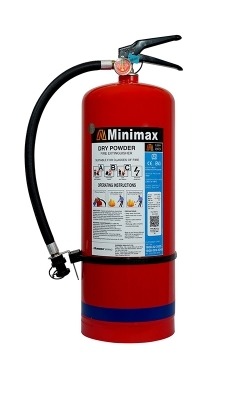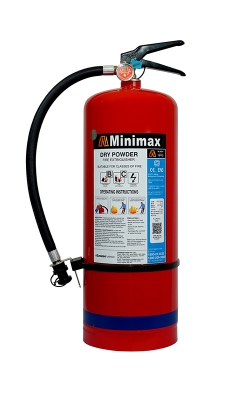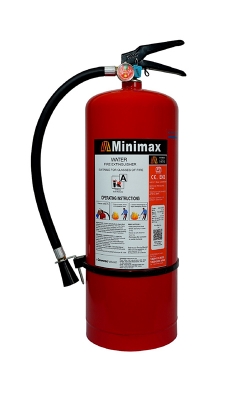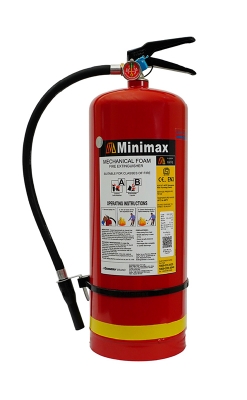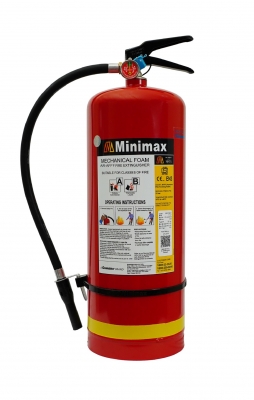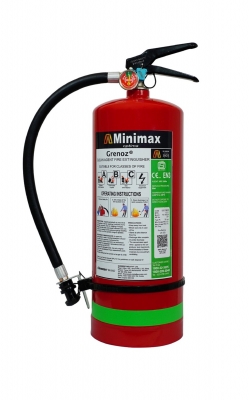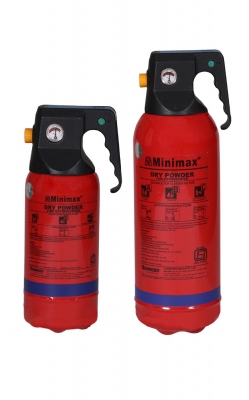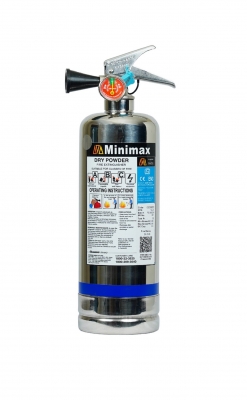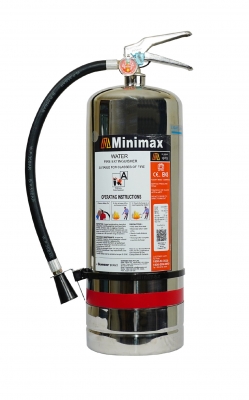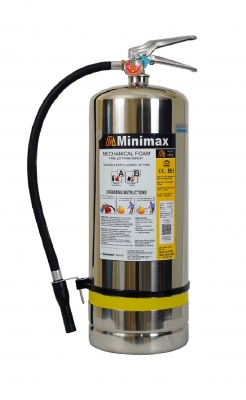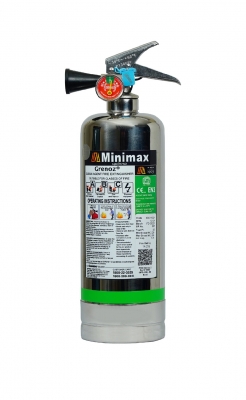Wet Chemical (F-Class) Type
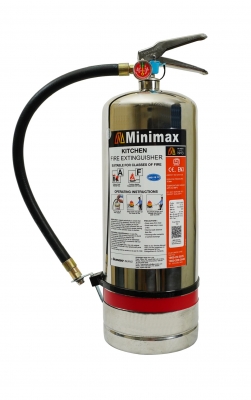
| Specifications | 1 ltr. | 2 ltr. | 4 ltr. | 6 ltr. | 9 ltr. |
| Fire Rating | - | 5F | - | 25F | 75F |
| Working Temperature °C | +5 °C to +60 °C | ||||
| Burst Pressure | 55/80 bar min., 110 bar (actual) approx | ||||
| Cylinder Testing Pressure | 35 bar for 30 sec. | ||||
| Operating Pressure | 12 bar | ||||
| Min. Effective Discharge Time | 8 sec. | 13 sec. | |||
| Propellant | Dry Nitrogen | ||||
| Charge | Wet Chemical (Potassium Based) | ||||
Minimax Kitchen (F-Class) Type fire extinguishers are designed for use on Class F fires which involves cooking oils and fat. Wet chemical is the only type of extinguisher to be used on kitchen (F-Class) fires. These extinguishers work by instigating a chemical reaction with fats and oils. This reaction reduces the temperature and eliminates the heat, causing flames extinguishment. The reason that no other type of extinguisher should be used on Class F fires is because they have pressurized jets and the pressure can result in burning oils and fats to end up in other surfaces and areas, creating a larger and uncontrollable blaze.
Wet chemical fire extinguishers have a unique nozzle which allows for application from a safer and further distance. A layer of cooling foam is emitted and forms layer on top of the burning materials. These extinguishers are specifically designed to combat kitchen fires and act as supplement to existing automatic kitchen hood fire suppression systems.
Minimax kitchen fire extinguishers are supplied in steel cylinder bodies as they are used in kitchens where hygiene and aesthetics are concern.
Minimax kitchen fire extinguishers shall be installed in small pantries, commercial and industrial kitchens, restaurants and hotels where cooking oils are commonly used.
Look For More
FAQ's
- Class A, B and C Fire Hazard – Fire Extinguisher within 15 m travel distance.
- Class D, F and Special Fire Hazard – Fire extinguisher within 10 m travel distance.




